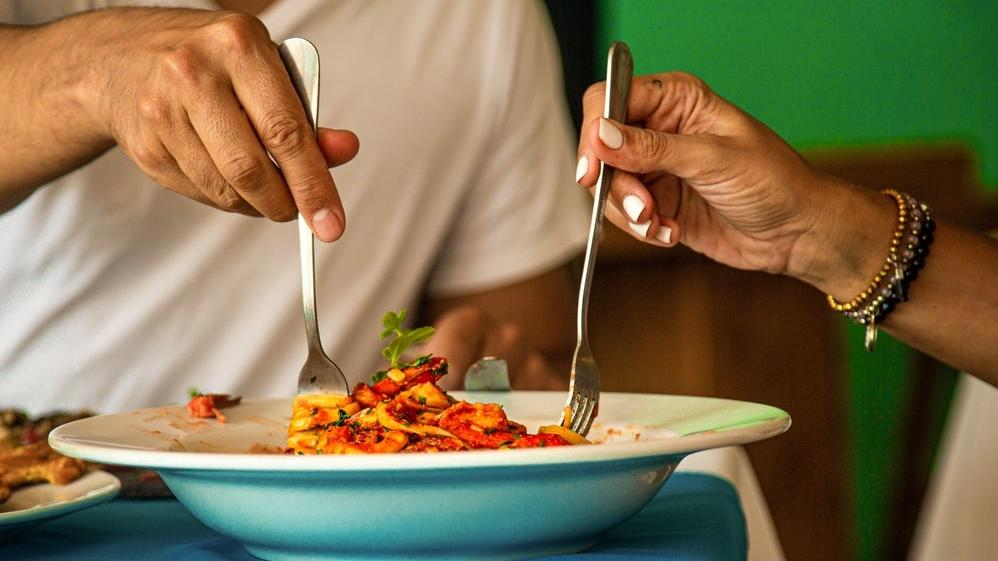Why Restaurants Don't Want You Splitting A Plate
Sharing is not caring in restaurants. This is why.
Ordering appetizers to share at the table might be the go-to strategy for friends dining out, but it's not the ideal for restaurants, The Wall Street Journal reports. The act of sharing plates is so bad for business that some restaurants are tweaking their menus to offset the costs.
There are a number of reasons that diners like to split an entree. For one thing, it might allow them to try more items on the appetizer menu, or help them strategize dessert. But it's also simply cheaper, and inflation has plagued consumers for years now. One minute it's better to eat at home and another it's cheaper to dine out, but what has remained constant is the fact that food is a greater expense than it used to be. The most recent Consumer Price Index numbers released by the U.S. Bureau of Labor Statistics shows the cost for food away from home has risen 5.3% over the past year, which is significantly higher than the 1.7% for food at home.
With those numbers in mind, it's no wonder that we might suddenly have the desire to order a dish to share with the table rather than ordering a large entree we likely wouldn't finish anyway. But this approach means we're creating smaller individual check sizes, and that's not so great for a restaurant's bottom line.
A 2022 report from Datassential found that 21% of diners said they had split an entree to lower the cost of a meal within the previous six months, and 58% said they would keep doing it. But if a restaurant straight up banned the practice of splitting entrees, customers would surely be unhappy, so many businesses are implementing different strategies to heavily discourage the practice.
For example, some restaurants are reducing the portion sizes on certain small plates to make them more difficult to share. Abraham Merchant, chief executive of a New York–based management company with 17 affiliated restaurants, has items such as duck confit or a spring roll meant for one on the menus at some of his restaurants.
At the same time, some restaurants are simply adding more expensive small plates meant for one, while also increasing the prices of their shareable menu items. Calissa, a Greek restaurant in Water Mill, New York, updated its menu with small plates like thinly sliced raw yellowtail ($24) and fluke ($18), both meant for an individual, and increased the price of its lobster pasta, meant for sharing; WSJ notes the price increased from $60 to $130.
The challenge that plate sharing presents for restaurants only compounds when it comes to larger groups. Anne McBride, vice president of programs at the James Beard Foundation, tells WSJ that groups of diners sharing fewer dishes, lingering too long, and/or abstaining from alcohol can make it difficult for restaurants to offset expenses, since individual entrees, non-sharable small plates, alcohol markup, and turnover are the primary ways restaurants increase their profit margins. So not only is each individual spending less on food, but the restaurant also can't rely on the upcharge for expensive cocktails as much as before because people are becoming less interested in alcoholic beverages—and they can't seat a party that might have spent more money, since the current party refuses to vacate.
For this reason, some restaurants aren't trying to discourage the sharing, but are instead revamping menus to make room for smaller, more affordable plates. This is the opposite approach in which the hope is that customers buy more of the inexpensive plates to share and end up racking up a larger bill. Other restaurants are also taking the approach of offering large entrees intended to be shared, but charging for sides separately so that even if people split a main dish, they still have to spend more to round out the meal.
So as we head into 2024, don't be surprised if your favorite $6.99 hummus spread appetizer suddenly transforms into a bite-sized pita triangle adorned with a dot of hummus for $4.99.
